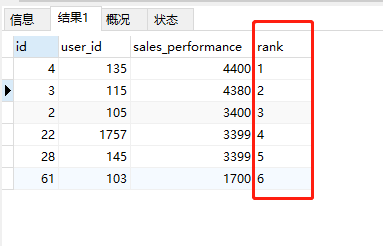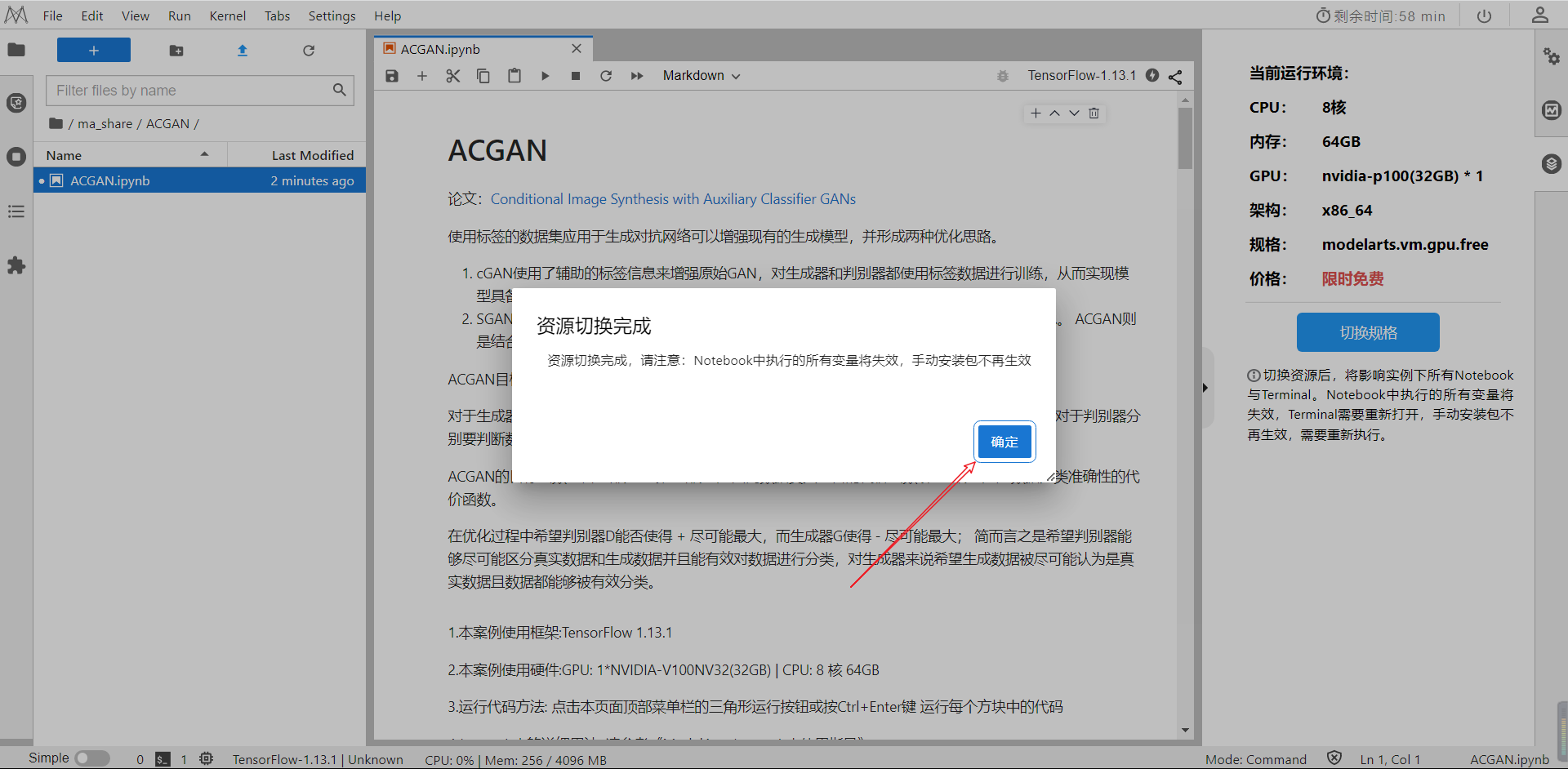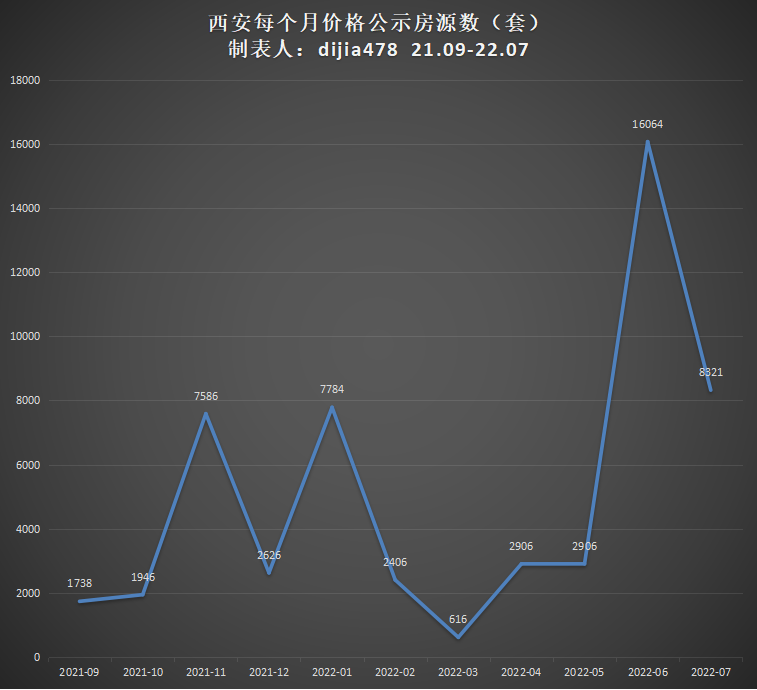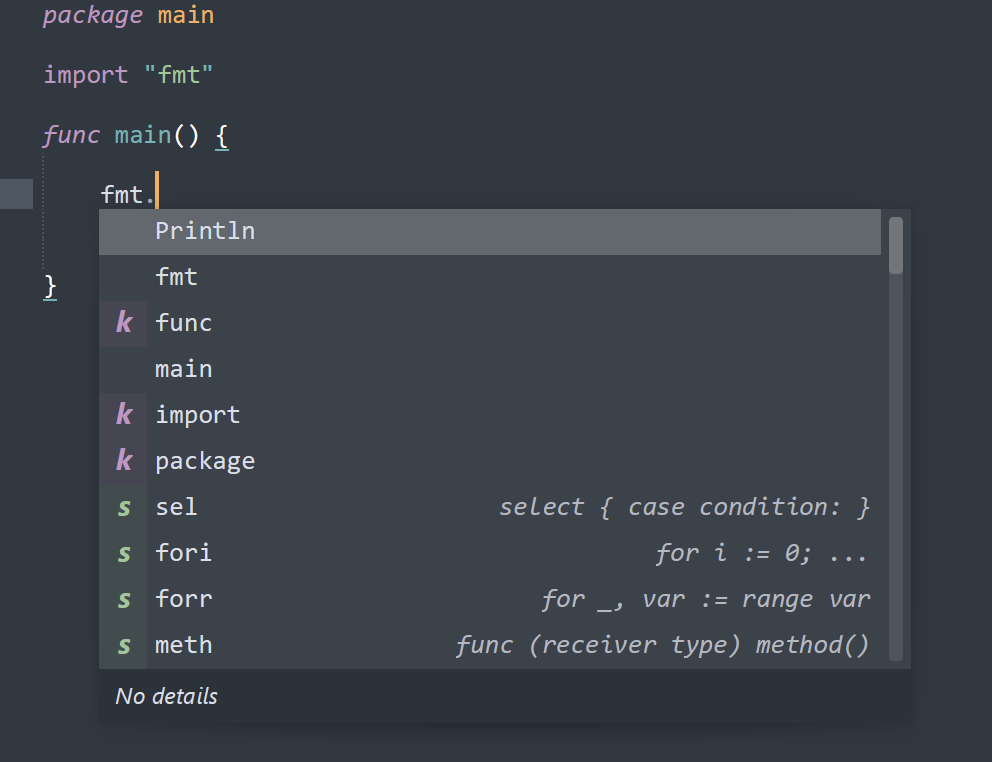当前位置:网站首页>高等数学(第七版)同济大学 习题4-1 个人解答
高等数学(第七版)同济大学 习题4-1 个人解答
2022-08-03 14:37:00 【Navigator_Z】
高等数学(第七版)同济大学 习题4-1
1. 利用求导运算验证下列等式: \begin{aligned}&1. \ 利用求导运算验证下列等式:&\end{aligned} 1. 利用求导运算验证下列等式:
( 1 ) ∫ 1 x 2 + 1 d x = l n ( x + x 2 + 1 ) + C ; ( 2 ) ∫ 1 x 2 x 2 − 1 d x = x 2 − 1 x + C ; ( 3 ) ∫ 2 x ( x 2 + 1 ) ( x + 1 ) 2 d x = a r c t a n x + 1 x + 1 + C ; ( 4 ) ∫ s e c x d x = l n ∣ t a n x + s e c x ∣ + C ; ( 5 ) ∫ x c o s x d x = x s i n x + c o s x + C ; ( 6 ) ∫ e x s i n x d x = 1 2 e x ( s i n x − c o s x ) + C . \begin{aligned} &\ \ (1)\ \ \int \frac{1}{\sqrt{x^2+1}}dx=ln(x+\sqrt{x^2+1})+C;\\\\ &\ \ (2)\ \ \int \frac{1}{x^2\sqrt{x^2-1}}dx=\frac{\sqrt{x^2-1}}{x}+C;\\\\ &\ \ (3)\ \ \int \frac{2x}{(x^2+1)(x+1)^2}dx=arctan\ x+\frac{1}{x+1}+C;\\\\ &\ \ (4)\ \ \int sec\ xdx=ln\ |tan\ x+sec\ x|+C;\\\\ &\ \ (5)\ \ \int xcos\ xdx=xsin\ x+cos\ x+C;\\\\ &\ \ (6)\ \ \int e^xsin\ xdx=\frac{1}{2}e^x(sin\ x-cos\ x)+C. & \end{aligned} (1) ∫x2+11dx=ln(x+x2+1)+C; (2) ∫x2x2−11dx=xx2−1+C; (3) ∫(x2+1)(x+1)22xdx=arctan x+x+11+C; (4) ∫sec xdx=ln ∣tan x+sec x∣+C; (5) ∫xcos xdx=xsin x+cos x+C; (6) ∫exsin xdx=21ex(sin x−cos x)+C.
解:
( 1 ) [ l n ( x + x 2 + 1 ) + C ] ′ = 1 x + x 2 + 1 ⋅ ( 1 + x x 2 + 1 ) = 1 x 2 + 1 ( 2 ) ( x 2 − 1 x + C ) ′ = x x 2 − 1 ⋅ x − x 2 − 1 x 2 = 1 x 2 x 2 − 1 ( 3 ) ( a r c t a n x + 1 x + 1 + C ) ′ = 1 x 2 + 1 − 1 ( x + 1 ) 2 = 2 x ( x 2 + 1 ) ( x + 1 ) 2 ( 4 ) ( l n ∣ t a n x + s e c x ∣ + C ) ′ = 1 t a n x + s e c x ⋅ ( s e c 2 x + s e c x t a n x ) = s e c x ( 5 ) ( x s i n x + c o s x + C ) ′ = s i n x + x c o s x − s i n x = x c o s x ( 6 ) [ 1 2 e x ( s i n x − c o s x ) + C ] ′ = 1 2 e x ( s i n x − c o s x ) + 1 2 e x ( c o s x + s i n x ) = e x s i n x \begin{aligned} &\ \ (1)\ [ln(x+\sqrt{x^2+1})+C]'=\frac{1}{x+\sqrt{x^2+1}}\cdot \left(1+\frac{x}{\sqrt{x^2+1}}\right)=\frac{1}{\sqrt{x^2+1}}\\\\ &\ \ (2)\ \left(\frac{\sqrt{x^2-1}}{x}+C\right)'=\frac{\frac{x}{\sqrt{x^2-1}}\cdot x-\sqrt{x^2-1}}{x^2}=\frac{1}{x^2\sqrt{x^2-1}}\\\\ &\ \ (3)\ \left(arctan\ x+\frac{1}{x+1}+C\right)'=\frac{1}{x^2+1}-\frac{1}{(x+1)^2}=\frac{2x}{(x^2+1)(x+1)^2}\\\\ &\ \ (4)\ (ln\ |tan\ x+sec\ x|+C)'=\frac{1}{tan\ x+sec\ x}\cdot (sec^2\ x+sec\ xtan\ x)=sec\ x\\\\ &\ \ (5)\ (xsin\ x+cos\ x+C)'=sin\ x+xcos\ x-sin\ x=xcos\ x\\\\ &\ \ (6)\ \left[\frac{1}{2}e^x(sin\ x-cos\ x)+C\right]'=\frac{1}{2}e^x(sin\ x-cos\ x)+\frac{1}{2}e^x(cos\ x+sin\ x)=e^xsin\ x & \end{aligned} (1) [ln(x+x2+1)+C]′=x+x2+11⋅(1+x2+1x)=x2+11 (2) (xx2−1+C)′=x2x2−1x⋅x−x2−1=x2x2−11 (3) (arctan x+x+11+C)′=x2+11−(x+1)21=(x2+1)(x+1)22x (4) (ln ∣tan x+sec x∣+C)′=tan x+sec x1⋅(sec2 x+sec xtan x)=sec x (5) (xsin x+cos x+C)′=sin x+xcos x−sin x=xcos x (6) [21ex(sin x−cos x)+C]′=21ex(sin x−cos x)+21ex(cos x+sin x)=exsin x
2. 求下列不定积分: \begin{aligned}&2. \ 求下列不定积分:&\end{aligned} 2. 求下列不定积分:
( 1 ) ∫ d x x 2 ; ( 2 ) ∫ x x d x ; ( 3 ) ∫ d x x ; ( 4 ) ∫ x 2 x 3 d x ; ( 5 ) ∫ d x x 2 x ; ( 6 ) ∫ x n m d x ; ( 7 ) ∫ 5 x 3 d x ; ( 8 ) ∫ ( x 2 − 3 x + 2 ) d x ; ( 9 ) ∫ d h 2 g h ( g 是常数 ) ; ( 10 ) ∫ ( x 2 + 1 ) 2 d x ; ( 11 ) ∫ ( x + 1 ) ( x 3 − 1 ) d x ; ( 12 ) ∫ ( 1 − x ) 2 x d x ; ( 13 ) ∫ ( 2 e x + 3 x ) d x ; ( 14 ) ∫ ( 3 1 + x 2 − 2 1 − x 2 ) d x ; ( 15 ) ∫ e x ( 1 − e − x x ) d x ; ( 16 ) ∫ 3 x e x d x ; ( 17 ) ∫ 2 ⋅ 3 x − 5 ⋅ 2 x 3 x d x ; ( 18 ) ∫ s e c x ( s e c x − t a n x ) d x ; ( 19 ) ∫ c o s 2 x 2 d x ; ( 20 ) ∫ d x 1 + c o s 2 x ; ( 21 ) ∫ c o s 2 x c o s x − s i n x d x ; ( 22 ) ∫ c o s 2 x c o s 2 x s i n 2 x d x ; ( 23 ) ∫ c o t 2 x d x ; ( 24 ) ∫ c o s θ ( t a n θ + s e c θ ) d θ ; ( 25 ) ∫ x 2 x 2 + 1 d x ; ( 26 ) ∫ 3 x 4 + 2 x 2 x 2 + 1 d x . \begin{aligned} &\ \ (1)\ \ \int \frac{dx}{x^2};\ \ \ \ \ \ \ \ \ \ \ \ \ \ \ \ \ \ \ \ \ \ \ \ \ \ \ \ \ \ \ \ (2)\ \ \int x\sqrt{x}dx;\\\\ &\ \ (3)\ \ \int \frac{dx}{\sqrt{x}};\ \ \ \ \ \ \ \ \ \ \ \ \ \ \ \ \ \ \ \ \ \ \ \ \ \ \ \ \ \ \ (4)\ \ \int x^2\sqrt[3]{x}dx;\\\\ &\ \ (5)\ \ \int \frac{dx}{x^2\sqrt{x}};\ \ \ \ \ \ \ \ \ \ \ \ \ \ \ \ \ \ \ \ \ \ \ \ \ \ \ (6)\ \ \int \sqrt[m]{x^n}dx;\\\\ &\ \ (7)\ \ \int 5x^3dx;\ \ \ \ \ \ \ \ \ \ \ \ \ \ \ \ \ \ \ \ \ \ \ \ \ \ \ \ (8)\ \ \int (x^2-3x+2)dx;\\\\ &\ \ (9)\ \ \int \frac{dh}{\sqrt{2gh}}\ (g是常数);\ \ \ \ \ \ \ \ \ (10)\ \ \int (x^2+1)^2dx;\\\\ &\ \ (11)\ \ \int (\sqrt{x}+1)(\sqrt{x^3}-1)dx;(12)\ \ \int \frac{(1-x)^2}{\sqrt{x}}dx;\\\\ &\ \ (13)\ \ \int \left(2e^x+\frac{3}{x}\right)dx;\ \ \ \ \ \ \ \ \ \ \ \ (14)\ \ \int \left(\frac{3}{1+x^2}-\frac{2}{\sqrt{1-x^2}}\right)dx;\\\\ &\ \ (15)\ \ \int e^x\left(1-\frac{e^{-x}}{\sqrt{x}}\right)dx;\ \ \ \ \ \ \ \ (16)\ \ \int 3^xe^xdx;\\\\ &\ \ (17)\ \ \int \frac{2\cdot 3^x-5\cdot 2^x}{3^x}dx;\ \ \ \ \ \ \ \ \ \ (18)\ \ \int sec\ x(sec\ x-tan\ x)dx;\\\\ &\ \ (19)\ \ \int cos^2 \frac{x}{2}dx;\ \ \ \ \ \ \ \ \ \ \ \ \ \ \ \ \ \ \ \ \ \ \ (20)\ \ \int \frac{dx}{1+cos\ 2x};\\\\ &\ \ (21)\ \ \int \frac{cos\ 2x}{cos\ x-sin\ x}dx;\ \ \ \ \ \ \ \ \ \ (22)\ \ \int \frac{cos\ 2x}{cos^2\ xsin^2\ x}dx;\\\\ &\ \ (23)\ \ \int cot^2\ xdx;\ \ \ \ \ \ \ \ \ \ \ \ \ \ \ \ \ \ \ \ \ \ \ \ (24)\ \ \int cos\ \theta(tan\ \theta+sec\ \theta)d\theta;\\\\ &\ \ (25)\ \ \int \frac{x^2}{x^2+1}dx;\ \ \ \ \ \ \ \ \ \ \ \ \ \ \ \ \ \ \ \ \ \ \ (26)\ \ \int \frac{3x^4+2x^2}{x^2+1}dx. & \end{aligned} (1) ∫x2dx; (2) ∫xxdx; (3) ∫xdx; (4) ∫x23xdx; (5) ∫x2xdx; (6) ∫mxndx; (7) ∫5x3dx; (8) ∫(x2−3x+2)dx; (9) ∫2ghdh (g是常数); (10) ∫(x2+1)2dx; (11) ∫(x+1)(x3−1)dx;(12) ∫x(1−x)2dx; (13) ∫(2ex+x3)dx; (14) ∫(1+x23−1−x22)dx; (15) ∫ex(1−xe−x)dx; (16) ∫3xexdx; (17) ∫3x2⋅3x−5⋅2xdx; (18) ∫sec x(sec x−tan x)dx; (19) ∫cos22xdx; (20) ∫1+cos 2xdx; (21) ∫cos x−sin xcos 2xdx; (22) ∫cos2 xsin2 xcos 2xdx; (23) ∫cot2 xdx; (24) ∫cos θ(tan θ+sec θ)dθ; (25) ∫x2+1x2dx; (26) ∫x2+13x4+2x2dx.
解:
( 1 ) ∫ d x x 2 = ∫ x − 2 d x = x − 2 + 1 − 2 + 1 + C = − 1 x + C ( 2 ) ∫ x x d x = ∫ x 3 2 d x = x 3 2 + 1 3 2 + 1 + C = 2 5 x 5 2 + C ( 3 ) ∫ d x x = ∫ x − 1 2 d x = x − 1 2 + 1 − 1 2 + 1 + C = 2 x + C ( 4 ) ∫ x 2 x 3 d x = ∫ x 7 3 d x = x 7 3 + 1 7 3 + 1 + C = 3 10 x 10 3 + C ( 5 ) ∫ d x x 2 x = ∫ x − 5 2 d x = x − 5 2 + 1 − 5 2 + 1 + C = − 2 3 x − 3 2 + C ( 6 ) ∫ x n m d x = ∫ x n m d x = x n m + 1 n m + 1 + C = m m + n x m + n m + C ( 7 ) ∫ 5 x 3 d x = 5 x 3 + 1 3 + 1 + C = 5 4 x 4 + C ( 8 ) ∫ ( x 2 − 3 x + 2 ) d x = ∫ x 2 d x − 3 ∫ x d x + 2 ∫ d x = 1 3 x 3 − 3 2 x 2 + 2 x + C ( 9 ) ∫ d h 2 g h = 1 2 g ∫ h − 1 2 d h = 2 h g + C ( 10 ) ∫ ( x 2 + 1 ) 2 d x = ∫ ( x 4 + 2 x 2 + 1 ) d x = ∫ x 4 d x + 2 ∫ x 2 d x + ∫ d x = 1 5 x 5 + 2 3 x 3 + x + C ( 11 ) ∫ ( x + 1 ) ( x 3 − 1 ) d x = ∫ ( x 2 + x 3 2 − x 1 2 − 1 ) d x = ∫ x 2 d x + ∫ x 3 2 d x − ∫ x 1 2 d x − ∫ d x = 1 3 x 3 + 2 5 x 5 2 − 2 3 x 3 2 − x + C ( 12 ) ∫ ( 1 − x ) 2 x d x = ∫ ( x 3 2 − 2 x 1 2 + x − 1 2 ) d x = ∫ x 3 2 d x − 2 ∫ x 1 2 d x + ∫ x − 1 2 d x = 2 5 x 5 2 − 4 3 x 3 2 + 2 x 1 2 + C ( 13 ) ∫ ( 2 e x + 3 x ) d x = 2 ∫ e x d x + 3 ∫ d x x = 2 e x + 3 l n ∣ x ∣ + C ( 14 ) ∫ ( 3 1 + x 2 − 2 1 − x 2 ) d x = 3 ∫ d x 1 + x 2 − 2 ∫ d x 1 − x 2 = 3 a r c t a n x − 2 a r c s i n x + C ( 15 ) ∫ e x ( 1 − e − x x ) d x = ∫ e x d x − ∫ x − 1 2 d x = e x − 2 x 1 2 + C ( 16 ) ∫ 3 x e x d x = ∫ ( 3 e ) x d x = ( 3 e ) x l n ( 3 e ) + C = 3 x e x l n 3 + 1 + C ( 17 ) ∫ 2 ⋅ 3 x − 5 ⋅ 2 x 3 x d x = 2 ∫ d x − 5 ∫ ( 2 3 ) x d x = 2 x − 5 l n 2 3 ( 2 3 ) x + C = 2 x − 5 l n 2 − l n 3 ( 2 3 ) x + C ( 18 ) ∫ s e c x ( s e c x − t a n x ) d x = ∫ s e c 2 x d x − ∫ s e c x t a n x d x = t a n x − s e c x + C ( 19 ) ∫ c o s 2 x 2 d x = ∫ 1 + c o s x 2 d x = x + s i n x 2 + C ( 20 ) ∫ d x 1 + c o s 2 x = ∫ s e c 2 x 2 d x = 1 2 t a n x + C ( 21 ) ∫ c o s 2 x c o s x − s i n x d x = ∫ c o s 2 x − s i n 2 x c o s x − s i n x d x = s i n x − c o s x + C ( 22 ) ∫ c o s 2 x c o s 2 x s i n 2 x d x = ∫ c o s 2 x − s i n 2 x c o s 2 x s i n 2 x d x = ∫ ( c s c 2 x − s e c 2 x ) d x = ∫ c s c 2 x d x − ∫ s e c 2 x d x = − c o t x − t a n x + C ( 23 ) ∫ c o t 2 x d x = ∫ c s c 2 x d x − ∫ d x = − c o t x − x + C ( 24 ) ∫ c o s θ ( t a n θ + s e c θ ) d θ = ∫ s i n θ d θ + ∫ d θ = − c o s θ + θ + C ( 25 ) ∫ x 2 x 2 + 1 d x = ∫ d x − ∫ 1 x 2 + 1 d x = x − a r c t a n x + C ( 26 ) ∫ 3 x 4 + 2 x 2 x 2 + 1 d x = ∫ 3 x 2 d x − ∫ d x + ∫ 1 x 2 + 1 d x = x 3 − x + a r c t a n x + C \begin{aligned} &\ \ (1)\ \int \frac{dx}{x^2}=\int x^{-2}dx=\frac{x^{-2+1}}{-2+1}+C=-\frac{1}{x}+C\\\\ &\ \ (2)\ \int x\sqrt{x}dx=\int x^{\frac{3}{2}}dx=\frac{x^{\frac{3}{2}+1}}{\frac{3}{2}+1}+C=\frac{2}{5}x^{\frac{5}{2}}+C\\\\ &\ \ (3)\ \int \frac{dx}{\sqrt{x}}=\int x^{-\frac{1}{2}}dx=\frac{x^{-\frac{1}{2}+1}}{-\frac{1}{2}+1}+C=2\sqrt{x}+C\\\\ &\ \ (4)\ \int x^2\sqrt[3]{x}dx=\int x^{\frac{7}{3}}dx=\frac{x^{\frac{7}{3}+1}}{\frac{7}{3}+1}+C=\frac{3}{10}x^{\frac{10}{3}}+C\\\\ &\ \ (5)\ \int \frac{dx}{x^2\sqrt{x}}=\int x^{-\frac{5}{2}}dx=\frac{x^{-\frac{5}{2}+1}}{-\frac{5}{2}+1}+C=-\frac{2}{3}x^{-\frac{3}{2}}+C\\\\ &\ \ (6)\ \int \sqrt[m]{x^n}dx=\int x^{\frac{n}{m}}dx=\frac{x^{\frac{n}{m}+1}}{\frac{n}{m}+1}+C=\frac{m}{m+n}x^{\frac{m+n}{m}}+C\\\\ &\ \ (7)\ \int 5x^3dx=5\frac{x^{3+1}}{3+1}+C=\frac{5}{4}x^4+C\\\\ &\ \ (8)\ \int (x^2-3x+2)dx=\int x^2dx-3\int xdx+2\int dx=\frac{1}{3}x^3-\frac{3}{2}x^2+2x+C\\\\ &\ \ (9)\ \int \frac{dh}{\sqrt{2gh}}=\frac{1}{\sqrt{2g}}\int h^{-\frac{1}{2}}dh=\sqrt{\frac{2h}{g}}+C\\\\ &\ \ (10)\ \int (x^2+1)^2dx=\int (x^4+2x^2+1)dx=\int x^4dx+2\int x^2dx+\int dx=\frac{1}{5}x^5+\frac{2}{3}x^3+x+C\\\\ &\ \ (11)\ \int (\sqrt{x}+1)(\sqrt{x^3}-1)dx=\int (x^2+x^{\frac{3}{2}}-x^{\frac{1}{2}}-1)dx=\\\\ &\ \ \ \ \ \ \ \ \ \int x^2dx+\int x^{\frac{3}{2}}dx-\int x^{\frac{1}{2}}dx-\int dx=\frac{1}{3}x^3+\frac{2}{5}x^{\frac{5}{2}}-\frac{2}{3}x^{\frac{3}{2}}-x+C\\\\ &\ \ (12)\ \int \frac{(1-x)^2}{\sqrt{x}}dx=\int (x^{\frac{3}{2}}-2x^{\frac{1}{2}}+x^{-\frac{1}{2}})dx=\int x^{\frac{3}{2}}dx-2\int x^{\frac{1}{2}}dx+\int x^{-\frac{1}{2}}dx=\frac{2}{5}x^{\frac{5}{2}}-\frac{4}{3}x^{\frac{3}{2}}+2x^{\frac{1}{2}}+C\\\\ &\ \ (13)\ \int \left(2e^x+\frac{3}{x}\right)dx=2\int e^xdx+3\int \frac{dx}{x}=2e^x+3ln\ |x|+C\\\\ &\ \ (14)\ \int \left(\frac{3}{1+x^2}-\frac{2}{\sqrt{1-x^2}}\right)dx=3\int \frac{dx}{1+x^2}-2\int \frac{dx}{\sqrt{1-x^2}}=3arctan\ x-2arcsin\ x+C\\\\ &\ \ (15)\ \int e^x\left(1-\frac{e^{-x}}{\sqrt{x}}\right)dx=\int e^xdx-\int x^{-\frac{1}{2}}dx=e^x-2x^{\frac{1}{2}}+C\\\\ &\ \ (16)\ \int 3^xe^xdx=\int (3e)^xdx=\frac{(3e)^x}{ln(3e)}+C=\frac{3^xe^x}{ln\ 3+1}+C\\\\ &\ \ (17)\ \int \frac{2\cdot 3^x-5\cdot 2^x}{3^x}dx=2\int dx-5\int \left(\frac{2}{3}\right)^xdx=2x-\frac{5}{ln\ \frac{2}{3}}\left(\frac{2}{3}\right)^x+C=2x-\frac{5}{ln\ 2-ln\ 3}\left(\frac{2}{3}\right)^x+C\\\\ &\ \ (18)\ \int sec\ x(sec\ x-tan\ x)dx=\int sec^2\ xdx-\int sec\ xtan\ xdx=tan\ x-sec\ x+C\\\\ &\ \ (19)\ \int cos^2 \frac{x}{2}dx=\int \frac{1+cos\ x}{2}dx=\frac{x+sin\ x}{2}+C\\\\ &\ \ (20)\ \int \frac{dx}{1+cos\ 2x}=\int \frac{sec^2\ x}{2}dx=\frac{1}{2}tan\ x+C\\\\ &\ \ (21)\ \int \frac{cos\ 2x}{cos\ x-sin\ x}dx=\int \frac{cos^2\ x-sin^2\ x}{cos\ x-sin\ x}dx=sin\ x-cos\ x+C\\\\ &\ \ (22)\ \int \frac{cos\ 2x}{cos^2\ xsin^2\ x}dx=\int \frac{cos^2\ x-sin^2\ x}{cos^2\ xsin^2\ x}dx=\int (csc^2\ x-sec^2\ x)dx=\\\\ &\ \ \ \ \ \ \ \ \ \int csc^2\ xdx-\int sec^2\ xdx=-cot\ x-tan\ x+C\\\\ &\ \ (23)\ \int cot^2\ xdx=\int csc^2\ xdx-\int dx=-cot\ x-x+C\\\\ &\ \ (24)\ \int cos\ \theta(tan\ \theta+sec\ \theta)d\theta=\int sin\ \theta d\theta+\int d\theta=-cos\ \theta+\theta+C\\\\ &\ \ (25)\ \int \frac{x^2}{x^2+1}dx=\int dx-\int \frac{1}{x^2+1}dx=x-arctan\ x+C\\\\ &\ \ (26)\ \int \frac{3x^4+2x^2}{x^2+1}dx=\int 3x^2dx-\int dx+\int \frac{1}{x^2+1}dx=x^3-x+arctan\ x+C & \end{aligned} (1) ∫x2dx=∫x−2dx=−2+1x−2+1+C=−x1+C (2) ∫xxdx=∫x23dx=23+1x23+1+C=52x25+C (3) ∫xdx=∫x−21dx=−21+1x−21+1+C=2x+C (4) ∫x23xdx=∫x37dx=37+1x37+1+C=103x310+C (5) ∫x2xdx=∫x−25dx=−25+1x−25+1+C=−32x−23+C (6) ∫mxndx=∫xmndx=mn+1xmn+1+C=m+nmxmm+n+C (7) ∫5x3dx=53+1x3+1+C=45x4+C (8) ∫(x2−3x+2)dx=∫x2dx−3∫xdx+2∫dx=31x3−23x2+2x+C (9) ∫2ghdh=2g1∫h−21dh=g2h+C (10) ∫(x2+1)2dx=∫(x4+2x2+1)dx=∫x4dx+2∫x2dx+∫dx=51x5+32x3+x+C (11) ∫(x+1)(x3−1)dx=∫(x2+x23−x21−1)dx= ∫x2dx+∫x23dx−∫x21dx−∫dx=31x3+52x25−32x23−x+C (12) ∫x(1−x)2dx=∫(x23−2x21+x−21)dx=∫x23dx−2∫x21dx+∫x−21dx=52x25−34x23+2x21+C (13) ∫(2ex+x3)dx=2∫exdx+3∫xdx=2ex+3ln ∣x∣+C (14) ∫(1+x23−1−x22)dx=3∫1+x2dx−2∫1−x2dx=3arctan x−2arcsin x+C (15) ∫ex(1−xe−x)dx=∫exdx−∫x−21dx=ex−2x21+C (16) ∫3xexdx=∫(3e)xdx=ln(3e)(3e)x+C=ln 3+13xex+C (17) ∫3x2⋅3x−5⋅2xdx=2∫dx−5∫(32)xdx=2x−ln 325(32)x+C=2x−ln 2−ln 35(32)x+C (18) ∫sec x(sec x−tan x)dx=∫sec2 xdx−∫sec xtan xdx=tan x−sec x+C (19) ∫cos22xdx=∫21+cos xdx=2x+sin x+C (20) ∫1+cos 2xdx=∫2sec2 xdx=21tan x+C (21) ∫cos x−sin xcos 2xdx=∫cos x−sin xcos2 x−sin2 xdx=sin x−cos x+C (22) ∫cos2 xsin2 xcos 2xdx=∫cos2 xsin2 xcos2 x−sin2 xdx=∫(csc2 x−sec2 x)dx= ∫csc2 xdx−∫sec2 xdx=−cot x−tan x+C (23) ∫cot2 xdx=∫csc2 xdx−∫dx=−cot x−x+C (24) ∫cos θ(tan θ+sec θ)dθ=∫sin θdθ+∫dθ=−cos θ+θ+C (25) ∫x2+1x2dx=∫dx−∫x2+11dx=x−arctan x+C (26) ∫x2+13x4+2x2dx=∫3x2dx−∫dx+∫x2+11dx=x3−x+arctan x+C
3. 含有未知函数的导数的方程称为微分方程,例如方程 d y d x = f ( x ) . 其中 d y d x 为未知函数的导数, f ( x ) 为已知函数。如果将函数 y = φ ( x ) 代入微分方程,使微分方程称为恒等式,那么函数 y = φ ( x ) 就称为该微分方程的解。求下列微分方程满足所给条件的解: \begin{aligned}&3. \ 含有未知函数的导数的方程称为微分方程,例如方程\frac{dy}{dx}=f(x).其中\frac{dy}{dx}为未知函数的导数,\\\\&\ \ \ \ f(x)为已知函数。如果将函数y=\varphi(x)代入微分方程,使微分方程称为恒等式,那么函数y=\varphi(x)\\\\&\ \ \ \ 就称为该微分方程的解。求下列微分方程满足所给条件的解:&\end{aligned} 3. 含有未知函数的导数的方程称为微分方程,例如方程dxdy=f(x).其中dxdy为未知函数的导数, f(x)为已知函数。如果将函数y=φ(x)代入微分方程,使微分方程称为恒等式,那么函数y=φ(x) 就称为该微分方程的解。求下列微分方程满足所给条件的解:
( 1 ) d y d x = ( x − 2 ) 2 , y ∣ x = 2 = 0 ; ( 2 ) d 2 x d y 2 = 2 t 3 , d x d t ∣ t = 1 = 1 , x ∣ t = 1 = 1. \begin{aligned} &\ \ (1)\ \ \frac{dy}{dx}=(x-2)^2,y|_{x=2}=0;\\\\ &\ \ (2)\ \ \frac{d^2x}{dy^2}=\frac{2}{t^3},\frac{dx}{dt}\bigg|_{t=1}=1,x|_{t=1}=1. & \end{aligned} (1) dxdy=(x−2)2,y∣x=2=0; (2) dy2d2x=t32,dtdx∣∣t=1=1,x∣t=1=1.
解:
( 1 ) y = ∫ ( x − 2 ) 2 d x = 1 3 ( x − 2 ) 3 + C ,由 y ∣ x = 2 = 0 ,得 C = 0 ,因此, y = 1 3 ( x − 2 ) 3 . ( 2 ) d x d t = ∫ 2 t 3 d t = − 1 t 2 + C 0 ,由 d x d t ∣ t = 1 = 1 ,得 C 0 = 2 ,因此, d x d t = − 1 t 2 + 2 , x = ∫ ( − 1 t 2 + 2 ) d t = 1 t + 2 t + C 1 ,由 x ∣ t = 1 = 1 ,得 C 1 = − 2 ,因此, x = 1 t + 2 t − 2. \begin{aligned} &\ \ (1)\ y=\int (x-2)^2dx=\frac{1}{3}(x-2)^3+C,由y|_{x=2}=0,得C=0,因此,y=\frac{1}{3}(x-2)^3.\\\\ &\ \ (2)\ \frac{dx}{dt}=\int \frac{2}{t^3}dt=-\frac{1}{t^2}+C_0,由\frac{dx}{dt}\bigg|_{t=1}=1,得C_0=2,因此,\frac{dx}{dt}=-\frac{1}{t^2}+2,\\\\ &\ \ \ \ \ \ \ \ \ x=\int \left(-\frac{1}{t^2}+2\right)dt=\frac{1}{t}+2t+C_1,由x|_{t=1}=1,得C_1=-2,因此,x=\frac{1}{t}+2t-2. & \end{aligned} (1) y=∫(x−2)2dx=31(x−2)3+C,由y∣x=2=0,得C=0,因此,y=31(x−2)3. (2) dtdx=∫t32dt=−t21+C0,由dtdx∣∣t=1=1,得C0=2,因此,dtdx=−t21+2, x=∫(−t21+2)dt=t1+2t+C1,由x∣t=1=1,得C1=−2,因此,x=t1+2t−2.
4. 汽车以 20 m / s 的速度在直道上行驶,刹车后匀减速行驶了 50 m 停住,求刹车加速度。可执行下列步骤: \begin{aligned}&4. \ 汽车以20m/s的速度在直道上行驶,刹车后匀减速行驶了50m停住,求刹车加速度。可执行下列步骤:&\end{aligned} 4. 汽车以20m/s的速度在直道上行驶,刹车后匀减速行驶了50m停住,求刹车加速度。可执行下列步骤:
( 1 ) 求微分方程 d 2 s d t 2 = − k 满足条件 d s d t ∣ t = 0 = 20 及 s ∣ t = 0 = 0 的解; ( 2 ) 求使 d s d t = 0 的 t 值及相应的 s 值; ( 3 ) 求使 s = 50 的 k 值。 \begin{aligned} &\ \ (1)\ \ 求微分方程\frac{d^2s}{dt^2}=-k满足条件\frac{ds}{dt}\bigg|_{t=0}=20及s|_{t=0}=0的解;\\\\ &\ \ (2)\ \ 求使\frac{ds}{dt}=0的t值及相应的s值;\\\\ &\ \ (3)\ \ 求使s=50的k值。 & \end{aligned} (1) 求微分方程dt2d2s=−k满足条件dtds∣∣t=0=20及s∣t=0=0的解; (2) 求使dtds=0的t值及相应的s值; (3) 求使s=50的k值。
解:
( 1 ) d s d t = ∫ − k d t = − k t + C 0 ,由 d s d t ∣ t = 0 = 20 ,得 C 0 = 20 ,因此, d s d t = − k t + 20 , s = ∫ ( − k t + 20 ) d t = − 1 2 k t 2 + 20 t + C 1 ,由 s ∣ t = 0 = 0 ,得 C 1 = 0 ,因此, s = − 1 2 k t 2 + 20 t . ( 2 ) 令 d s d t = 0 ,得 t = 20 k . ( 3 ) 当 t = 20 k 时, s = 50 ,即 − 1 2 k ( 20 k ) 2 + 400 k = 50 ,得 k = 4 ,因此,刹车加速度为 − 4 m / s 2 . \begin{aligned} &\ \ (1)\ \frac{ds}{dt}=\int -kdt=-kt+C_0,由\frac{ds}{dt}\bigg|_{t=0}=20,得C_0=20,因此,\frac{ds}{dt}=-kt+20,\\\\ &\ \ \ \ \ \ \ \ \ s=\int (-kt+20)dt=-\frac{1}{2}kt^2+20t+C_1,由s|_{t=0}=0,得C_1=0,因此,s=-\frac{1}{2}kt^2+20t.\\\\ &\ \ (2)\ 令\frac{ds}{dt}=0,得t=\frac{20}{k}.\\\\ &\ \ (3)\ 当t=\frac{20}{k}时,s=50,即-\frac{1}{2}k\left(\frac{20}{k}\right)^2+\frac{400}{k}=50,得k=4,因此,刹车加速度为-4m/s^2. & \end{aligned} (1) dtds=∫−kdt=−kt+C0,由dtds∣∣t=0=20,得C0=20,因此,dtds=−kt+20, s=∫(−kt+20)dt=−21kt2+20t+C1,由s∣t=0=0,得C1=0,因此,s=−21kt2+20t. (2) 令dtds=0,得t=k20. (3) 当t=k20时,s=50,即−21k(k20)2+k400=50,得k=4,因此,刹车加速度为−4m/s2.
5. 一曲线通过点 ( e 2 , 3 ) ,且在任一点处的切线的斜率等于该点横坐标的倒数,求该曲线的方程。 \begin{aligned}&5. \ 一曲线通过点(e^2, \ 3),且在任一点处的切线的斜率等于该点横坐标的倒数,求该曲线的方程。&\end{aligned} 5. 一曲线通过点(e2, 3),且在任一点处的切线的斜率等于该点横坐标的倒数,求该曲线的方程。
解:
设曲线方程为 y = f ( x ) ,则点 ( x , y ) 处的切线斜率为 f ′ ( x ) ,且 f ′ ( x ) = 1 x ,因此, f ( x ) = ∫ 1 x d x = l n ∣ x ∣ + C , 又因曲线过点 ( e 2 , 3 ) ,有 f ( e 2 ) = l n ∣ e 2 ∣ + C = 3 ,得 C = 1 ,则曲线方程为 y = l n x + 1 \begin{aligned} &\ \ 设曲线方程为y=f(x),则点(x, \ y)处的切线斜率为f'(x),且f'(x)=\frac{1}{x},因此,f(x)=\int \frac{1}{x}dx=ln\ |x|+C,\\\\ &\ \ 又因曲线过点(e^2, \ 3),有f(e^2)=ln\ |e^2|+C=3,得C=1,则曲线方程为y=ln\ x+1 & \end{aligned} 设曲线方程为y=f(x),则点(x, y)处的切线斜率为f′(x),且f′(x)=x1,因此,f(x)=∫x1dx=ln ∣x∣+C, 又因曲线过点(e2, 3),有f(e2)=ln ∣e2∣+C=3,得C=1,则曲线方程为y=ln x+1
6. 一物体由静止开始运动,经 t s 后的速度是 3 t 2 m / s ,问 \begin{aligned}&6. \ 一物体由静止开始运动,经t s后的速度是3t^2\ m/s,问&\end{aligned} 6. 一物体由静止开始运动,经ts后的速度是3t2 m/s,问
( 1 ) 在 3 s 后物体离开出发点的距离是多少? ( 2 ) 物体走完 360 m 需要多少时间? \begin{aligned} &\ \ (1)\ \ 在3s后物体离开出发点的距离是多少?\\\\ &\ \ (2)\ \ 物体走完360m需要多少时间? & \end{aligned} (1) 在3s后物体离开出发点的距离是多少? (2) 物体走完360m需要多少时间?
解:
( 1 ) 设物体自原点沿横轴正向由静止开始运动,移动函数为 s = s ( t ) ,则 s ( t ) = ∫ v ( t ) d t = ∫ 3 t 2 d t = t 3 + C , 由于 s ( 0 ) = 0 ,所以 s ( t ) = t 3 ,则 s ( 3 ) = 27 ,所以 3 s 后物体离开出发点的距离是 27 m 。 ( 2 ) 由 t 3 = 360 ,得 t = 360 3 ≈ 7.1 ,则物体走完 360 m 需要大约 7.1 s \begin{aligned} &\ \ (1)\ 设物体自原点沿横轴正向由静止开始运动,移动函数为s=s(t),则s(t)=\int v(t)dt=\int 3t^2dt=t^3+C,\\\\ &\ \ \ \ \ \ \ \ \ 由于s(0)=0,所以s(t)=t^3,则s(3)=27,所以3s后物体离开出发点的距离是27m。\\\\ &\ \ (2)\ 由t^3=360,得t=\sqrt[3]{360} \approx 7.1,则物体走完360m需要大约7.1s & \end{aligned} (1) 设物体自原点沿横轴正向由静止开始运动,移动函数为s=s(t),则s(t)=∫v(t)dt=∫3t2dt=t3+C, 由于s(0)=0,所以s(t)=t3,则s(3)=27,所以3s后物体离开出发点的距离是27m。 (2) 由t3=360,得t=3360≈7.1,则物体走完360m需要大约7.1s
7. 证明函数 a r c s i n ( 2 x − 1 ) , a r c c o s ( 1 − 2 x ) 和 2 a r c t a n x 1 − x 都是 1 x − x 2 的原函数。 \begin{aligned}&7. \ 证明函数arcsin(2x-1),arccos(1-2x)和2arctan\sqrt{\frac{x}{1-x}}都是\frac{1}{\sqrt{x-x^2}}的原函数。&\end{aligned} 7. 证明函数arcsin(2x−1),arccos(1−2x)和2arctan1−xx都是x−x21的原函数。
解:
[ a r c s i n ( 2 x − 1 ) ] ′ = 2 1 − ( 2 x − 1 ) 2 = 1 x − x 2 [ a r c c o s ( 1 − 2 x ) ] ′ = − − 2 1 − ( 1 − 2 x ) 2 = 1 x − x 2 ( 2 a r c t a n x 1 − x ) ′ = 2 1 1 + x 1 − x ⋅ 1 2 1 − x x ⋅ 1 ( 1 − x ) 2 = 1 x − x 2 \begin{aligned} &\ \ [arcsin(2x-1)]'=\frac{2}{\sqrt{1-(2x-1)^2}}=\frac{1}{\sqrt{x-x^2}}\\\\ &\ \ [arccos(1-2x)]'=-\frac{-2}{\sqrt{1-(1-2x)^2}}=\frac{1}{\sqrt{x-x^2}}\\\\ &\ \ \left(2arctan\sqrt{\frac{x}{1-x}}\right)'=2\frac{1}{1+\frac{x}{1-x}}\cdot \frac{1}{2}\sqrt{\frac{1-x}{x}}\cdot \frac{1}{(1-x)^2}=\frac{1}{\sqrt{x-x^2}} & \end{aligned} [arcsin(2x−1)]′=1−(2x−1)22=x−x21 [arccos(1−2x)]′=−1−(1−2x)2−2=x−x21 (2arctan1−xx)′=21+1−xx1⋅21x1−x⋅(1−x)21=x−x21
边栏推荐
猜你喜欢
随机推荐
PAT乙级-B1015 德才论(25)
GDB调试CoreDump文件
GBase 8c数据库集群中,怎么替换节点呢?比如设置A节点为gtm,换到B节点上。
Ansible中的角色使用
WMS软件国内主要供应商分析
A high-performance creation book, ASUS Dreadnought Pro15 2022 is completely enough for daily photo editing and editing!
图形学-粒子系统 (Particle System)
你把 浏览器滚动事件 玩明白
node项目开发踩坑(一)
UE4 解决C盘缓存问题
不安装运行时运行.NET程序
网络通信的过程
使用alarm函数实现sleep,使用alarm函数实现对阻塞操作设置超时
How to use redis
进程通信的方式
Use Typora+EasyBlogImageForTypora to write a blog and upload pictures quickly without a picture bed
理解string类
阿里大牛最新总结分享的高并发编程核心笔记(终极版),高并发系统架构场景一应俱全
动作条的多项复选
R7 6800H+RTX3050+120Hz 2.8K OLED屏,无畏Pro15 2022开启预售









